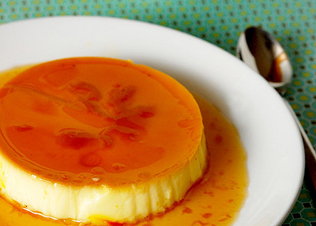News
Substituting ingredients
Thursday, April 25th, 2013
How often have you come home with a recipe in mind and the motivation to cook up a storm only to find that you have forgotten one of the key ingredients from your trip to the store? Here are some quick and easy substitution solutions for missing or exotic and expensive ingredients – nearly all of them can be found in your very own pantry!
Agar agar is a vegan setting agent for jellies and terrines. An extract from red sea weed, it can be found in exotic food markets but is not very common. There are other vegetarian setting agents made from mushrooms, for example, but they are just as hard to come across. The next best thing, gelatine leaves or powder, is widely available in most supermarkets, but it is unfortunately made from animal by-products.
Agave syrup or nectar is fast becoming popular in baking as a natural sweetener. It can be found in most health stores, but as an alternative, honey is the closest substitute. Maple syrup would also work if you’re cooking for vegans, but use slightly more as agave is much sweeter than any of these suggested substitutions. You may also need to thin the syrup down, as agave is runnier in consistency in comparison.
Buttermilk is popular in baking. If you have decided to have an impromptu baking session at home and have everything else but buttermilk, mix 1 cup of plain yoghurt with 1 teaspoon of lemon juice as an alternative.
Caster sugar is occasionally called for in place of regular sugar. If you find your shelves bare, simply blend granulated white sugar in a processor until fine and measure out accordingly from there.
Cream of tartar is not all that common in recipes these days, but your grandmother’s books may call for it. It can be tricky to find, so substitute the same amount of baking powder to act as a rising agent in baking, and the same amount of white vinegar to act as a stabilising agent when beating egg whites.
Fresh porcinis are a rare and expensive ingredient and are only in season for a short time. Dried porcinis, however, can be found at some supermarkets and good local delis. Make sure that they release the strong earthy aroma for which porcinis are known when opening the packet. Simply soak them in a bowl of boiling water for 10 minutes before cooking in stocks, soups or pastas.
Ghee, similar to clarified butter, is popular in Indian cooking. It’s the pure butter fat that’s left over after all of the milk solids and water have been removed after cooking. You can use everyday butter in its place, but the taste will be different. Olive oil or canola oil are also options; they have better health benefits but not the same high smoking point as ghee.
Palm sugar is another common Asian ingredient and can be substituted with dark sticky brown sugar.
Peanut oil or ground nut oil isn’t an everyday pantry item, but can be substituted with a neutral oil with a high smoking point like vegetable oil, with a splash of sesame oil for flavour.
Pine nuts are expensive and sometime tricky to find. Use blanched raw almonds instead: they’re delicious when toasted and sprinkled into salads, over bakes, or used in pestos.
Saffron is known to be the most expensive spice in the world. The tangle of deep red threads releases their bright yellow colour in liquid, which is why you usually need to soak them in water for a few minutes before use. If you are unable to find saffron, or the price seems too absurd, simply use a quarter teaspoon of ground turmeric as an alternative for a strand.
Seasonal berries add a great pop of flavour and colour in baked goods. Buy frozen berries like raspberries, cranberries, blueberries or mixed berries and let them defrost at room temperature on a sheet of kitchen towel to absorb the excess liquid.
Self-raising flour can easily be achieved by simply sieving together 1 cup of plain flour with 1 teaspoon of baking powder per cup of self-raising flour required.
Sour cream is easy to replicate. Use the same measurements of crème fraîche, or simply whip cream until stiff, fold in a good squeeze of lemon juice and season to taste.
Tamarind is an ingredient popular in Asian cooking. You will often find it as paste or set in a hard form at most local Asian supermarkets, but you can also simply add a few squeezes of fresh lime or lemon juice in its place for similarly sour results.
Truffles are an expensive luxury ingredient. If you aren’t lucky enough to find them fresh, simply substitute with a few drops of good quality truffle oil over your meals just before serving to enjoy the flavour at a fraction of the price.
Vanilla beans are sometimes elusive on supermarket shelves and can prove to be expensive too. Try using pure vanilla extract, which is made by soaking the vanilla beans in alcohol and water to extract the flavour and fragrance. Alternatively, use vanilla paste, which is a mixture of vanilla extract, vanilla beans and sugar.
By Hannah Lewry












